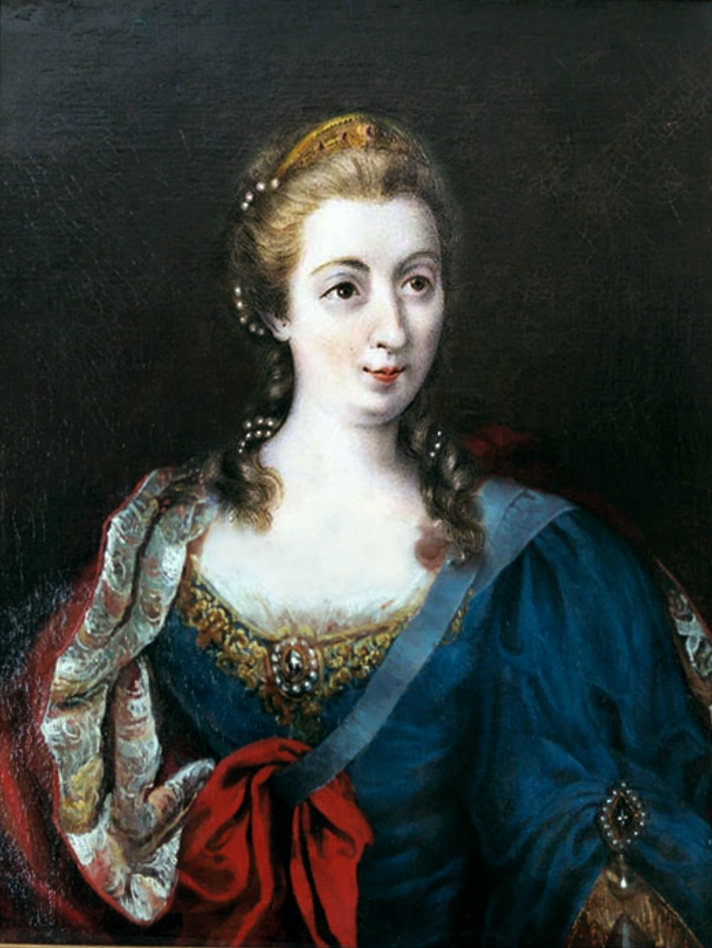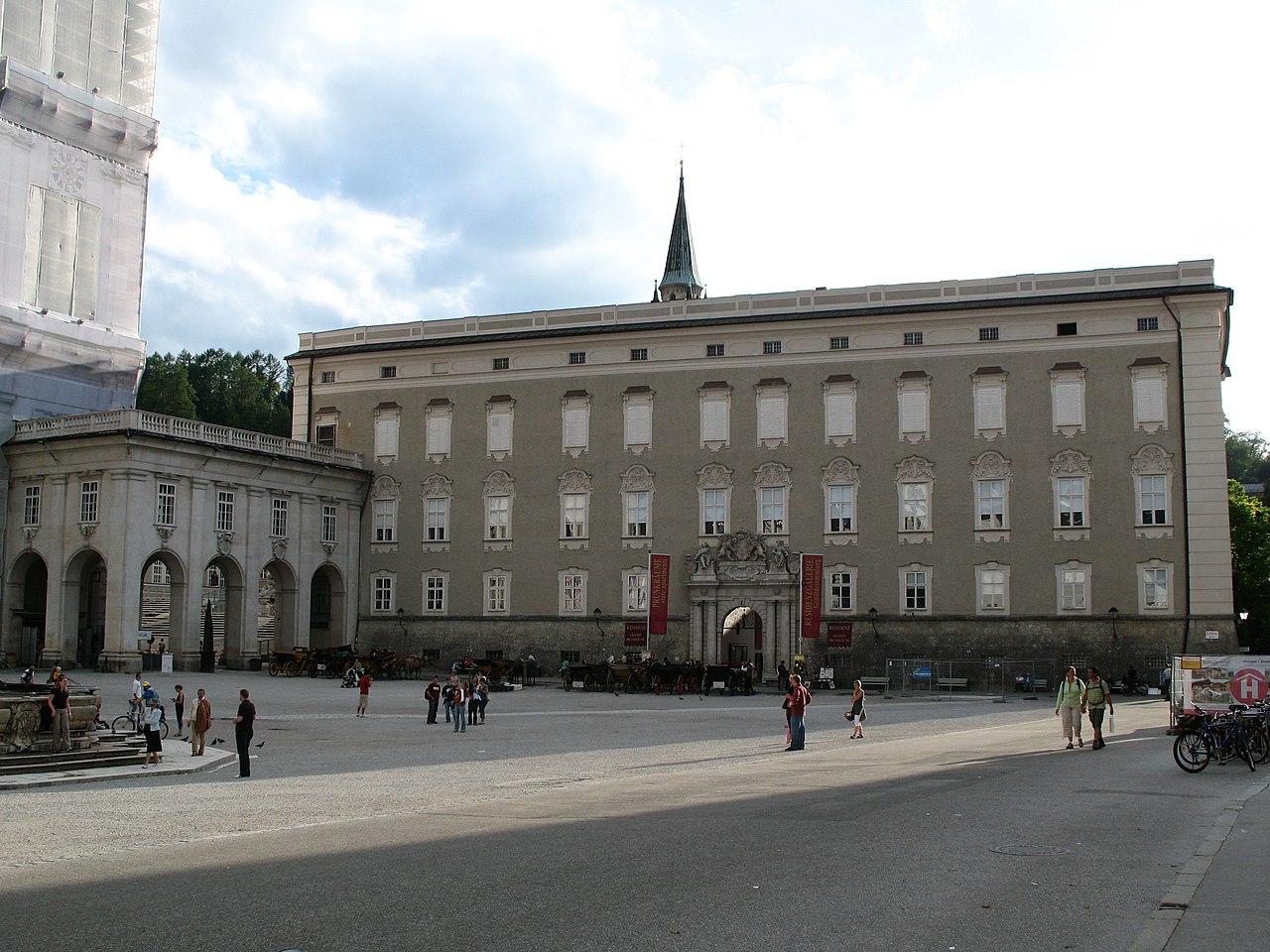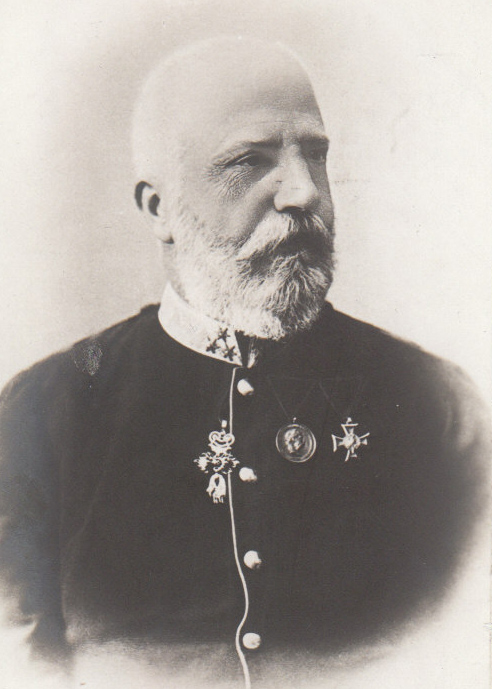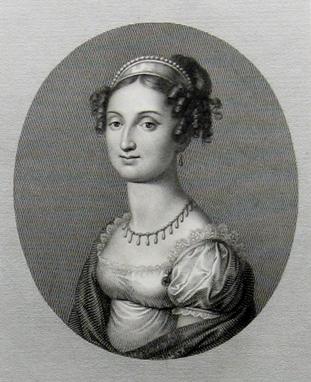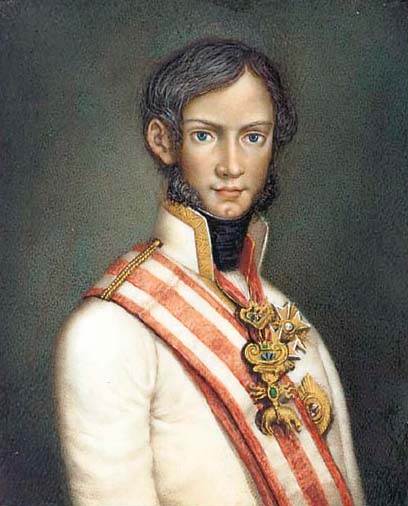by Susan Flantzer
© Unofficial Royalty 2021
The Duchy of Modena and Reggio was a small northwestern Italian state that existed from 1452 to 1859, except during the Napoleonic Wars (1796 – 1814). The House of Este ruled the duchy from 1452 – 1796, and then the House of Austria-Este ruled from 1814 – 1859. In 1796, Modena was occupied by a French army under Napoleon Bonaparte, who deposed Ercole III d’Este, Duke of Modena and Reggio, and added the duchy to the French Empire. Ercole III died in exile in 1803.
Ercole III’s only surviving child of Maria Beatrice d’Este, the heiress of Modena and Reggio, married Archduke Ferdinand Karl of Austria, son of Francis Stephen, Duke of Lorraine, Grand Duke of Tuscany, Holy Roman Emperor and Maria Theresa, in her own right Archduchess of Austria, and Queen of Hungary, Croatia, and Bohemia. The son of Maria Beatrice and Ferdinand Karl regained the Duchy of Modena and Reggio as Francesco IV in 1814, after the fall of Napoleon Bonaparte.
The Duchy of Modena and Reggio was abolished during the Italian unification movement. It was annexed to the Kingdom of Sardinia in 1860. In 1861, Vittorio Emanuele II, King of Sardinia was proclaimed the first King of the new, united Kingdom of Italy.
********************

Maria Beatrice of Savoy, Duchess of Modena and Reggio; Credit – Wikipedia
Maria Beatrice of Savoy was the niece and the wife of Francesco IV, Duke of Modena and Reggio. She was also the Jacobite pretender to the thrones of England and Scotland from 1824 – 1840 (see below). Maria Beatrice Vittoria Giuseppina was born on December 6, 1792, in Turin, Kingdom of Sardinia, now in Italy. She was the eldest of the seven children and the eldest of the six daughters of Vittorio Emanuele I, King of Sardinia and Duke of Savoy and Maria Theresa of Austria-Este. Maria Beatrice’s paternal grandparents were Vittorio Amedeo III, King of Sardinia and Maria Antonia Ferdinanda of Spain. Her maternal grandparents were Archduke Ferdinand Karl of Austria-Este and Maria Beatrice d’Este, Duchess of Massa and Carrara in her own right.
Two of Maria Beatrice’s sisters died in childhood and her only brother died at the age of three from smallpox. Maria Beatrice and her three surviving sisters all married sovereigns. Children of Kings of Sardinia were often styled “of Savoy” as their fathers were also Dukes of Savoy from the House of Savoy.
- Maria Adelaide of Savoy (1794 – 1795), died in infancy
- Carlo Emanuele of Savoy (1796 – 1799) died in early childhood from smallpox
- A daughter (1800 – 1801), died in infancy
- Maria Teresa of Savoy (1803 – 1879), twin of Maria Anna, married Carlo II Ludovico, Duke of Parma, had two children
- Maria Anna of Savoy (1803 – 1884), twin of Maria Teresa, married Ferdinand I, Emperor of Austria, no children
- Maria Cristina of Savoy (1812 – 1836), married Ferdinando II, King of the Two Sicilies, had one son, died due to childbirth complications, in 2014 she was beatified by Pope Francis and is known as Blessed Maria Cristina of Savoy
In 1798, when Maria Beatrice was six years old, the French occupied Turin, the capital of the Duchy of Savoy, and forced her uncle Carlo Emanuele IV, King of Sardinia to give up all his territories on the Italian mainland. Carlo Emanuele IV and the rest of the Sardinian royal family withdrew to the island of Sardinia in 1799. When his beloved wife Marie Clotilde of France died from typhoid fever on March 7, 1802, the childless Carlo Emanuele IV was so upset by her death that he decided to abdicate. He left the throne of Sardinia to his brother, Maria Beatrice’s father who reigned as Vittorio Emanuele I, King of Sardinia. Maria Beatrice and her family remained on the island of Sardinia for fifteen years, living mostly in Cagliari. In 1814, two-thirds of Savoy was restored to the Kingdom of Sardinia following Napoleon’s defeat, and the family was able to return to Turin.

Maria Beatrice’s husband and uncle, Francesco IV, Duke of Modena and Reggio; Credit – Wikipedia
On June 20, 1812, at the Cathedral of the Assumption of the Mother of God and Saint Cecilia in Cagliari, Kingdom of Sardinia, now in Italy, 20-year-old niece Maria Beatrice married her 33-year-old maternal uncle Francesco IV, Duke of Modena and Reggio. Due to their close relationship, a special dispensation was received for their marriage from Pope Pius VII. Francesco was convinced that if he married Maria Beatrice, and her father and his two surviving brothers had no sons, he could become King of Sardinia. However, this plan did not work out. At a later date, Maria Beatrice’s mother and Francesco’s sister (and his mother-in-law) Maria Theresa was accused of trying to convince her childless brother-in-law Carlo Felice, King of Sardinia to name her brother Francesco as the heir to the throne of Sardinia and was exiled from the Kingdom of Sardinia for a while. On his deathbed, Carlo Felice, King of Sardinia named Carlo Alberto, Prince of Carignano, the senior male member of the House of Savoy-Carignano, a cadet branch of the House of Savoy, as his heir.
Francesco and Maria Beatrice had four children:
- Archduchess Maria Theresa of Austria-Este (1817 – 1886), married Prince Henri, Count of Chambord, Legitimist pretender to the French throne, no children
- Francesco V, Duke of Modena (1819 – 1875), married Princess Adelgunde of Bavaria, had one daughter who died in infancy, Francesco became the Jacobite claimant to the thrones of England, Scotland and Ireland upon the death of his mother
- Archduke Ferdinand Karl Viktor of Austria-Este (1821 – 1849), married Archduchess Elisabeth Franziska of Austria, had one daughter Maria Theresia of Austria-Este who became the last Queen of Bavaria. Maria Theresia also became the Jacobite claimant to the thrones of England, Scotland, and Ireland upon the death of her uncle Francesco V of Modena.
- Archduchess Maria Beatrix of Austria-Este (1824 – 1906), married Infante Juan of Spain, Count of Montizón, Carlist pretender to the Spanish throne, had two sons
Like Maria Beatrice’s family, her husband Francesco had also been exiled since 1796 from the Duchy of Modena and Reggio due to the occupation of Napoleon’s French forces. After the fall of Napoleon in 1814, the couple was able to return and made their solemn entry into Modena on July 14, 1814.

Henrietta of England, Duchess of Orléans, Maria Beatrice’s great-great-great-grandmother; Credit – Wikipedia
As the senior surviving descendant of Henrietta of England, Duchess of Orléans, daughter of King Charles I of England and sister of James II, King of England/James VII, King of Scots, Maria Beatrice became the Jacobite pretender to the thrones of England and Scotland after the death of her father Vittorio Emanuele I, King of Sardinia in 1824. James II had been deposed by the Glorious Revolution in 1688. The goal of the Jacobites was to restore the Roman Catholic heirs of King James II of England/VII of Scotland to the thrones of England and Scotland. However, unlike the Stuart Jacobite pretenders – James II’s son James Edward Francis Stuart and James II’s grandsons Charles Edward Stuart and Cardinal Henry Benedict Stuart – none of the later Jacobite pretenders ever claimed the title.
James II’s last legitimate Stuart descendant Cardinal Henry Benedict Stuart died in 1807. There were no surviving siblings of King James II/VII, son of King Charles I of England, or their legitimate descendants, except for the descendants of his youngest sister Henrietta of England, Duchess of Orléans. Henrietta married Philippe I, Duke of Orléans and they had one son who died in infancy and two daughters. Only their daughter Anne Marie d’Orléans, who married Vittorio Amedeo II, King of Sardinia, had children and so the Jacobite line of succession proceeded in the House of Savoy. See how the Jacobite succession arrived in the House of Savoy via Henrietta of England below.
Charles I of England → his daughter Henrietta of England, Duchess of Orléans → her daughter Anne Marie d’Orléans, Queen of Sardinia → her son Carlo Emanuele III, King of Sardinia → his son Vittorio Amadeo III, King of Sardinia → his son Carlo Emanuele IV, King of Sardinia → his brother Vittorio Emanuele I, King of Sardinia → his daughter Maria Beatrice of Savoy, Duchess of Modena and Reggio

Castello del Catajo; Credit – By Alessandro Vecchi – Own work, CC BY-SA 3.0, https://commons.wikimedia.org/w/index.php?curid=25277385
During the last years of her life, Maria Beatrice preferred to live at the Castello del Catajo in Battaglia Terme near Padua, then in the Kingdom of Lombardy-Venetia, now in Italy, a summer home purchased by Francesco IV in 1803. It was there that Maria Beatrice died from heart failure on September 15, 1840, at the age of 47. She was interred at the Church of San Vincenzo in Modena, Duchy of Modena and Reggio, now in Italy, in the funeral chapel her husband had built in 1836 for family members. Francesco IV survived his wife by less than six years, dying on January 21, 1846, aged 66, and was buried with his wife.

Funeral chapel of the House of Este and House of Austria-Este at the Church of San Vincenzo in Modena; Credit – Wikipedia
This article is the intellectual property of Unofficial Royalty and is NOT TO BE COPIED, EDITED, OR POSTED IN ANY FORM ON ANOTHER WEBSITE under any circumstances. It is permissible to use a link that directs to Unofficial Royalty.
Works Cited
- En.wikipedia.org. 2021. Maria Beatrice of Savoy – Wikipedia. [online] Available at: <https://en.wikipedia.org/wiki/Maria_Beatrice_of_Savoy> [Accessed 8 October 2021].
- Flantzer, Susan, 2021. Francesco IV, Duke of Modena and Reggio. [online] Unofficial Royalty. Available at: <https://www.unofficialroyalty.com/francesco-iv-duke-of-modena-and-reggio/> [Accessed 8 October 2021].
- Flantzer, S., 2021. Vittorio Emanuele I, King of Sardinia and Duke of Savoy. [online] Unofficial Royalty. Available at: <https://www.unofficialroyalty.com/vittorio-emanuele-i-king-of-sardinia-and-duke-of-savoy/> [Accessed 8 October 2021].
- It.wikipedia.org. 2021. Maria Beatrice di Savoia (1792-1840) – Wikipedia. [online] Available at: <https://it.wikipedia.org/wiki/Maria_Beatrice_di_Savoia_(1792-1840)> [Accessed 8 October 2021].
- Ru.wikipedia.org. 2021. Мария Беатриче Савойская — Википедия. [online] Available at: <https://ru.wikipedia.org/wiki/%D0%9C%D0%B0%D1%80%D0%B8%D1%8F_%D0%91%D0%B5%D0%B0%D1%82%D1%80%D0%B8%D1%87%D0%B5_%D0%A1%D0%B0%D0%B2%D0%BE%D0%B9%D1%81%D0%BA%D0%B0%D1%8F> [Accessed 8 October 2021].



